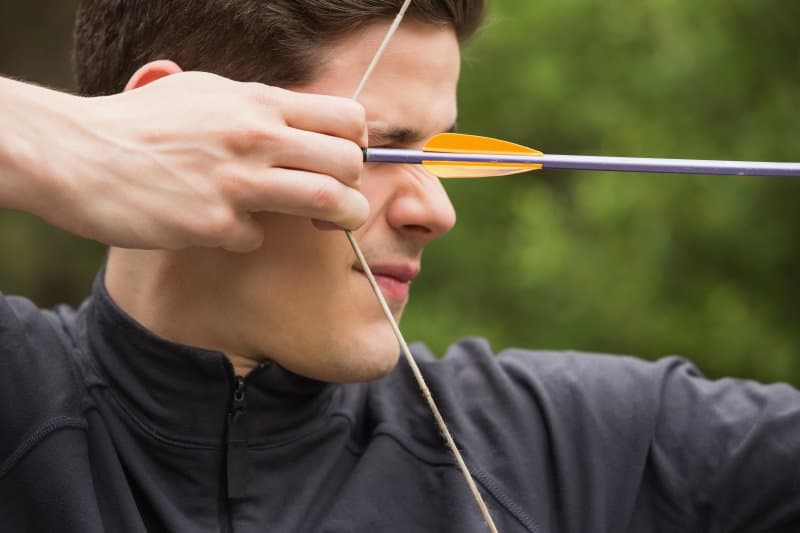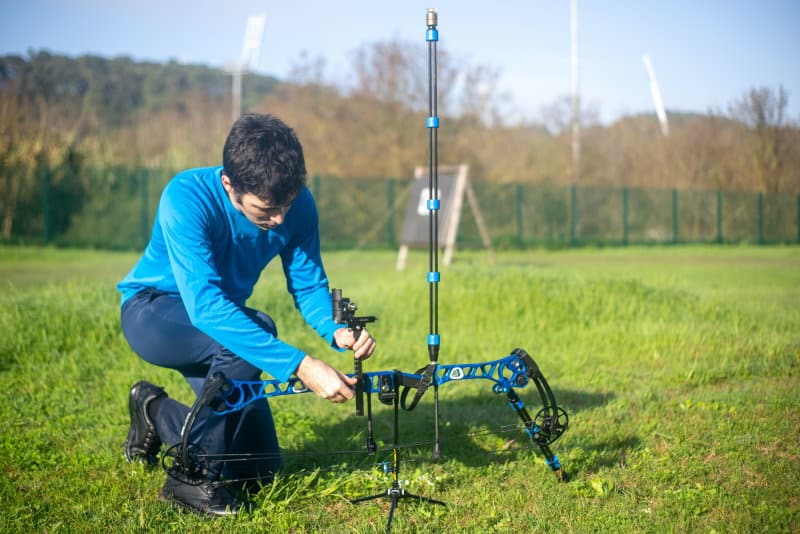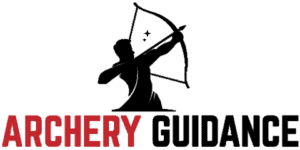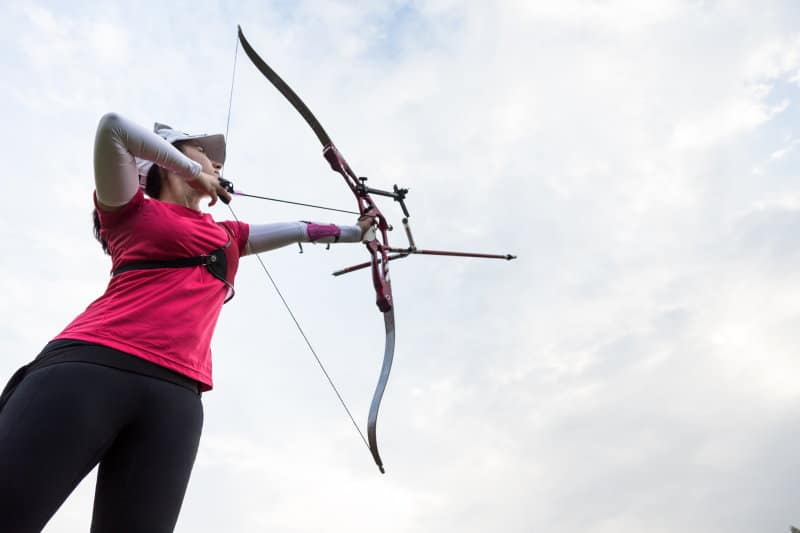Archery is one of the most thrilling and enjoyable sports out there. It just feels great to pull in so much weight and then let go and watch your arrow land in the golden circle.
However, if you practice this sport regularly, your bowstring may wear down. It’s only strands of fibers, after all. Sometimes, that leads to your bow becoming out of tune.
To tell if your bow is out of tune, observe the course of the arrows. Arrows shot from an out-of-tune bow will start flying oddly and unpredictably. An out-of-tune bow might also vibrate abruptly. Before you begin practicing, you should make sure your bow is in tune.
If your bow is out of tune, don’t be concerned. By the end of this article, you’ll be able to restore your bow’s full functionality in no time.
How Often Should You Tune Your Bow?
Your bowstring may be out of tune if it’s inconsistent and shoots too far off from the target. That is, assuming everything else is adjusted, such as the sight or your posture.
It’s best to tune your bow whenever any adjustments are made or when you realize that it’s out of tune.
To tell if your bow needs tuning, set up the target and fire around five arrows at it. You’re good to go if your shooting is consistent and hits where you want it to.
Make sure the bow is securely tightened before shooting. If you’re going to store the bow for a long while, you should loosen and unstring it. Leaving the bow strung isn’t recommended as it could cause damage.
Why Does Your Bow Get Out of Tune?

Strings and cables can strain, extend, and break if you use them for a long time. This can throw off your accuracy while shooting.
New strings may loosen to an extent and rest into the cam grooves or beneath the servings. That’s the protective cover that goes around the string and conceals the arrow’s nocking point.
Modifying your draw weight and length, as well as getting fresh arrows or an arrow rest, can all impact the performance of your bow.
Because bowstrings are subject to significant damage over time, you should inspect the tension of the string every time you use the bow.
Bowstring damage often goes unnoticed since it takes place in the interior of the string, and not the exterior.
Ideally, you should replace your bowstring once a year or as soon as you see any wear.
How to Tune Your Bow

There’s a variety of tuning techniques that you can resort to in order to set your bowstring, all of which can be used to achieve optimum bow performance.
These tuning styles are mainly for recurve and compound bows, though. If you own a crossbow and want to find more details, check out this article.
Paper Tuning
When the player shoots an arrow through a piece of paper, it’s known as paper tuning. This method is to study the rip it creates to identify the problem. It’s the most widely used approach.
The tear created by the arrow informs the archer of what he needs to do to improve his arrow flight. The arrows should normally be shot from an 8-foot distance.
The goal of this procedure is to create a smooth bullet-like hole with three precise slits indicating where the arrows pierced through the paper. There should be little or no slits.
Here’s what you should do to paper-tune your bow:
- Place a piece of paper on a frame or a target. Make sure it’s secure and not loose.
- Position yourself around 4 to 8 feet away from the paper.
- Draw your bowstring and point your arrow at the paper.
- Shoot through the paper when you’re ready.
- Examine the results and make any required adjustments to your bow.
- Repeat the process until you’re satisfied with the bow’s performance.
Walk Back Tuning
Walk back tuning is a technique in which you fire arrows at a specific point on a target while increasing your range from it using the same pin.
This process can also be done using paper or cardboard. To assure precision, it might be done after paper tuning.
At 20 yards, release three arrows, then switch to 40 yards and fire three more arrows with the same pin. Repeat the same process, but this time at a distance of 60 yards. Vertically, all six arrows should be completely aligned with one another.
Adjust your bow if you keep getting inconsistent results.
Bare Shaft Tuning
Bare shaft tuning is firing an arrow without fletching on it and comparing it to other arrows with the wings. The arrow’s flight will not be affected by the fletching as it travels to the target.
Set up a target and shoot at a distance of roughly 10 yards using three bare shaft arrows and three fletched arrows.
Proceed to shoot at a distance of 20 yards in intervals. Aim the bare-shaft and fletched arrows to be side by side.
Both sorts of arrows should land on the target at the same angle.
Machines
If you don’t think you’ll be able to tune the bow yourself, you can always have it done by an expert at an archery store.
Machines that pull back a bow and release an arrow to see how the bow performs are often used in some shops. This is useful since it eliminates human mistakes.
Although the devices don’t tune the bows, they do assist the specialists in identifying problems by allowing them to watch the bow operate closely.
How to Maintain a Bowstring

The bowstring is essential to the bow’s performance quality. As a result, it’s critical to keep the bowstring in good condition at all times.
If the bowstring feels dry, you need to wax it. Waxing is a great way to accomplish a good feel to the bowstring. Waxing a string keeps it from splitting and creates a waterproof layer that keeps water out of the threads.
It’s time to apply wax when strands that resemble hair start to rise from the bowstring, as though the string is becoming fuzzy.
Individual strands sticking out, on the other hand, indicate a torn bowstring that needs to be changed.
Waxing a bowstring is a straightforward process. Before you begin, make sure your bowstring is clean. From there, massage the wax along the string to spread it, then run your fingers up and down the string to make sure it’s evenly distributed.
Apply enough tension to your fingertips for them to warm up. There should be no noticeable bits of wax when you’re finished.
Any serving material should not be waxed. The wax might get underneath the serving material and cause it to slip and split.
Make sure your string isn’t over-waxed. This can hinder its performance.
How to Know If You Need a New Bowstring
Before each use, shooters should examine their bowstrings. If any of the bowstring strands are ragged or the serving has split, a replacement string may be required.
A usage time of roughly 200 shots is the average for new bowstrings. You might find a change in your bow’s performance after that.
Head to the archery shop for a new bowstring and a tune-up on the replacement.
Wrap-Up
Setting up a target and shooting some arrows will help indicate if the bow is out of tune.
If your arrows aren’t landing correctly, it’s possible that your bow needs to be tuned. If the bow has been adjusted or if it has been used for a long time, it may be out of tune.
There are numerous tuning styles to choose from. Because it’s the simplest, paper tuning is the most commonly used approach.
If your bowstring feels dry, wax it to keep it in good shape. If you notice any significant changes in the performance of your bow, it’s possible that your bowstring is damaged. In this case, you’ll need to replace it.
Lastly, be sure to check out our article on the signs that your bowstring went bad.

